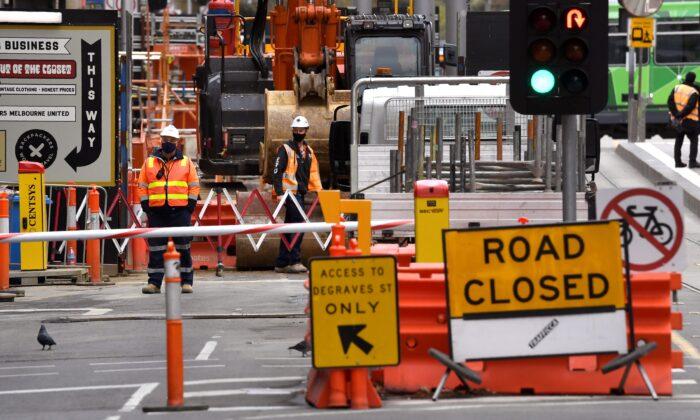Australia’s construction industry saw some improvement in February after the disruptions caused by the COVID-19 Omicron variant over December and January.
The Australian Industry Group/Housing Industry Association performance of construction index rose 7.5 points to 53.4 in February, indicating the sector is again growing with a score above 50 points.
Ai Group chief policy advisor Peter Burn said there was a healthy pick-up in new orders across the construction sector, and while difficulties in supply chains persisted in the month, the pace of decline in supplier deliveries eased.
Ongoing inflationary pressures were also evident with cost rises for inputs and wages growth remaining elevated.
“These conditions, together with the rebound of new orders suggest further inflationary pressures in the period ahead,” Burn said.
Other new figures due from the Australian Bureau of Statistics will give a further flavour of how the economy is performing in the early stages of 2022 after the strong recovery in the December quarter.
Wednesday’s national accounts showed the economy surged by a strong 3.4 per cent in the December quarter, matching the rebound after the 2020 recession, which was a 46-year high.
This followed the 1.9 per cent contraction in the September quarter caused by the Delta COVID-19 variant lockdowns.
Data earlier this week showed retail spending grew by a larger-than-expected 1.8 per cent in January with sales at their second highest level on record.
“Overall, the near term outlook for the Australian economy is bright,” KPMG senior economist Sarah Hunter said.
However, building approvals for January are expected to fall by three per cent as the earlier impact from the HomeBuilder stimulus measure is unwound.
Approvals did jump 8.2 per cent in December reflecting a strong rise in the more volatile “other dwellings” category, while private sector house approvals fell by a further 1.8 per cent and are now down 31.5 per cent since April 2021.
The ABS will also release the international trade balance for January, where economists’ forecast centre on a surplus of $9.3 billion, larger than the $8.4 billion reported for December.
Monthly surpluses have gradually wound back after a record high of $13.3 billion in July last year as iron ore prices retreated from their lofty heights and imports strengthened as the Australian economy reopened.
However, Westpac economists are expecting a 6.7 per cent bounce back in exports for January due to higher prices and shipments of iron ore and coal, outpacing a 2.7 per cent increase in imports due to higher fuel costs.





